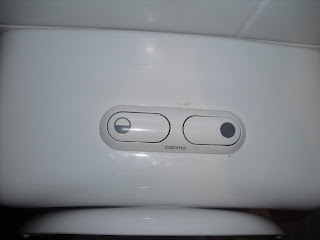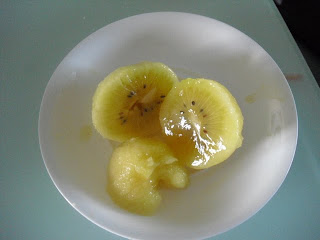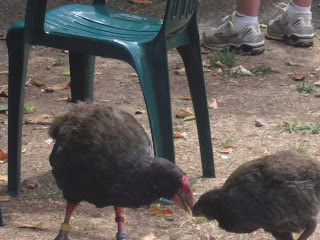But surprise! This one is not observed with a separate day off, much to our chagrin.

This Saturday was Treaty of Waitangi Day. It marks the day that 500 prominent Maori chieftains signed the treaty of Waitangi, a treaty that would govern the orderly transfer of land from Maori possession to English possession, and in the process make New Zealand an English colony. In modern times Treaty of Waitangi Day has been treated in much the same way as Columbus Day; with store sales, and a sense of colonial guilt.
The Treaty of Waitangi was named after the river by which it was signed. Interestingly, Waitangi means lamentation in Maori, and is exactly how both Kiwis of European ancestry and Maori feel about the Treaty. As historian Michael King wrote, "...the document would turn out to be the most contentious and problematic ingredient in New Zealand's national life."
It is clear that that the Maori chieftains had a minimal understanding of what the treaty entailed. It was hastily put together, and since the Maori had no written language until about twenty years before the treaty, they had to rely on trusted Anglican missionaries to decipher what it meant. That the Treaty was written in different languages, one of which was newly minted, also proved to be quite nettlesome. For instance in The Maori version, The Chieftains were to give up governance, but in the English version they ceded all of their Sovereignty to The Crown.
Since most of the Missionaries, The Maori's most trusted advisers, were Anglican they felt the best safest path for the Maori would be under the protection of the Crown. They most likely were right. Before the treaty, there was no orderly transfer of land from Maori to settlers. This left a tremendous amount of room for swindlers and hucksters to operate. There was also a private firm in London, the New Zealand Company, that was formed to colonize and annex New Zealand. In addition, the French were starting to be more prominent in the South Pacific and it was rumored they had their sights set on New Zealand . In other words, the vast resources of the islands were becoming clear, and more people were interested in exploiting them.
In the eyes of the Missionaries, who were genuinely interested in what was best for the Maori, it was a matter of choosing which option was the least worst. The swindlers cared little for the natives; it became clear the New Zealand Company only cared about exploiting New Zealand's natural wealth; and considering the tumultuous history of the former French colonies the Missionaries probably made the right choice.
After the treaty, New Zealand went from a Maori island where European settlers needed to be accommodated, to a place of European settlement that would carve out a place for the Maori. Like most native populations, the Maori population was stressed as more Europeans arrive. The number of Maori decreased, and their culture became in danger of extinction.
In fairness to Kiwi Europeans, they recognized the peril the Maori faced, and helped them save their culture. Today, Maori phrases such as "kia ora" (hello) are prominently displayed, and children learn Maori language in schools.
One of the greatest displays of Maori culture is the Haka, a traditional Maori war dance. The All Blacks, the New Zealand national rugby team which this nation is crazy for, performs one before their matches. It is a good example of how New Zealand has embraced Maori traditions.
Maybe if the Minnesota Vikings incorporated a Haka into their pregame rituals, they might be able to finally get back to the Super Bowl. More posts with Rachel pictures soon, I promise.














































_-group_at_Adelaide_Zoo.jpg)



